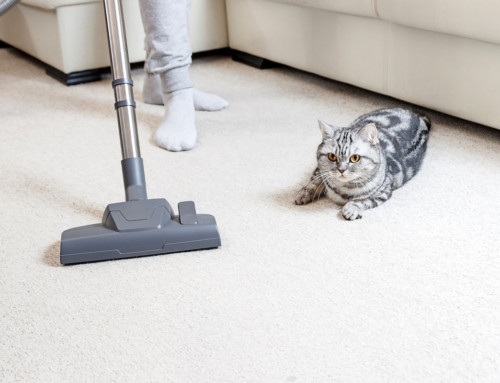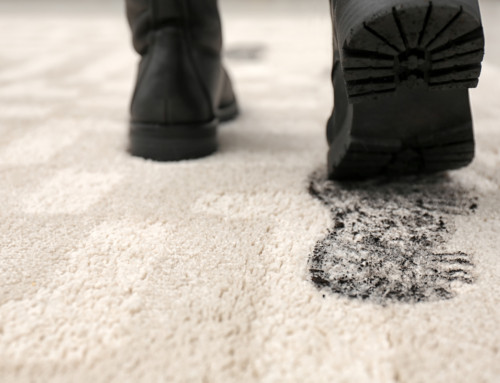Travertine floors are beautiful and elegant and have been around for thousands of years. These floors can take a space from ho-hum to fabulous. Travertine is a stone flooring crafted from natural limestone tiles that create impressive floors with their warm, neutral colors.
Each tile is installed with wide or narrow grout lines. After your floor is professionally installed, proper maintenance is critical to preserve the integrity of the stones and grout. You can maintain the beautiful appearance of your travertine floor for years to come and enjoy fresh looking grout if you use compatible products and careful cleaning practices.
Because travertine is a form of limestone which is “hard as a rock,” but it is also relatively porous when compared to some other natural stone construction materials. For this reason, it has certain inherent vulnerabilities that need to be considered when cleaning and caring for these materials. Travertine flooring needs specific cleaning instructions for long-term and regular maintenance.
How Often to Clean Travertine Flooring
Travertine floors need regular maintenance. Here are some tips for cleaning schedule:
- Regular vacuuming or sweeping, plus mopping, should be done weekly
- Whenever the floor is soiled vacuuming or sweeping, plus mopping.
- Disinfecting is a good idea for monthly maintenance
- Cleaning grout lines is a good idea every few months, though this interval can vary depending on how dirty your floor gets.
- Do not use abrasive chemical cleaners or anything acidic on travertine floors. Travertine stone can stain and discolor if it comes in contact with acidic substances.
Most stone flooring manufacturers recommend surface-sealing travertine every three to five years, though harsh chemicals and heavy use may wear out the sealer more quickly than that.
How to Clean Travertine Flooring
Regular Cleaning
Vacuum or sweep the floor every week to remove small dirt and grit particles that can cause minor abrasive scarring to the surface of the tile. Over time, these tiny particles can wear down the luster of the material while also removing the protective sealant coat, leaving the stone beneath vulnerable to discoloration and staining.
Mopping Travertine Flooring
The best way to mop a travertine floor is to use warm, plain water, applied with a mop or sponge that is wrung dry so that the surface gets barely damp. Do not saturate travertine tiles with water, as it can penetrate down past sealant or into grout lines, causing discoloration, degradation, and the growth of mold and mildew.
Disinfecting Travertine Flooring
For disinfecting purposes, a tablespoon of mild, non-acidic dish soap can be added to a gallon of water and used to damp-mop these floors. However, when this is done, the surface should be mopped a second time with clean water to remove any lingering residue that may exist. Toweling it dry is also recommended. Disinfecting does not need to be done with every mopping, but once a month is a good idea.
Cleaning Grout Lines
During seasonal temperature fluctuations, the grout lines between tiles allow for the expansion and contraction of the material, preventing individual pieces from rubbing into one another and cracking. However, it can also be the most vulnerable point in your travertine flooring installation, as these spaces are susceptible to water penetration, stains, discoloration, and the growth of dark, unsightly, and unhealthy mold.
Mix equal parts baking soda and water to create a gritty paste to clean travertine grout lines. With a small brush scrub the paste onto the grout which will allow you to wash the areas between the tiles without scratching their edges and causing damage to the material.
It is also highly recommended to bring in a tile cleaning specialist to clean your Travertine flooring.
Sealing Travertine
Travertine flooring has microscopic pores in the surface which can soak up liquids, leading to stains, discoloration, material degradation, and the growth of mold. The way to combat this is to ensure that the material is sealed correctly both during and after installation, and then again periodically throughout its existence.
The two types of sealants used on travertine floors are:
- Deep penetrating material which will seep down and clog the pores, making it difficult for moisture to invade the stone.
- A surface barrier sealer can be used to create a clear coating over the top of the tiles which will stop staining substances from discoloring them.
Once the initial below-surface sealer is brushed on, barrier surface coatings are then generally re-applied every few years to maintain the protective characteristics of this treatment.
Travertine tiles tend to be light in color, but adding sealer can deepen those hues, and give them a slightly glossy appearance. Some people like this, and if that is your desired effect you should re-apply the sealant frequently. On the other hand, some people prefer a weathered look which can be achieved by using it less often.
Travertine is a premium elegant flooring material, and regular cleaning and sealing will keep it looking its best for decades.
Give Auburn Carpet Specialists a call at 770-867-7541 to inspect and clean your travertine tiles.
Auburn Carpet Specialists are the area’s premier carpet cleaning service company, family owned and operated, that has earned a solid reputation for premium quality service and customer satisfaction. With more than 20 years of experience, we can truly call ourselves ‘Auburn Carpet Specialists’. We are located in Auburn, Georgia. Contact us today for a FREE Inspection and Estimate or call at 770-867-7541.






